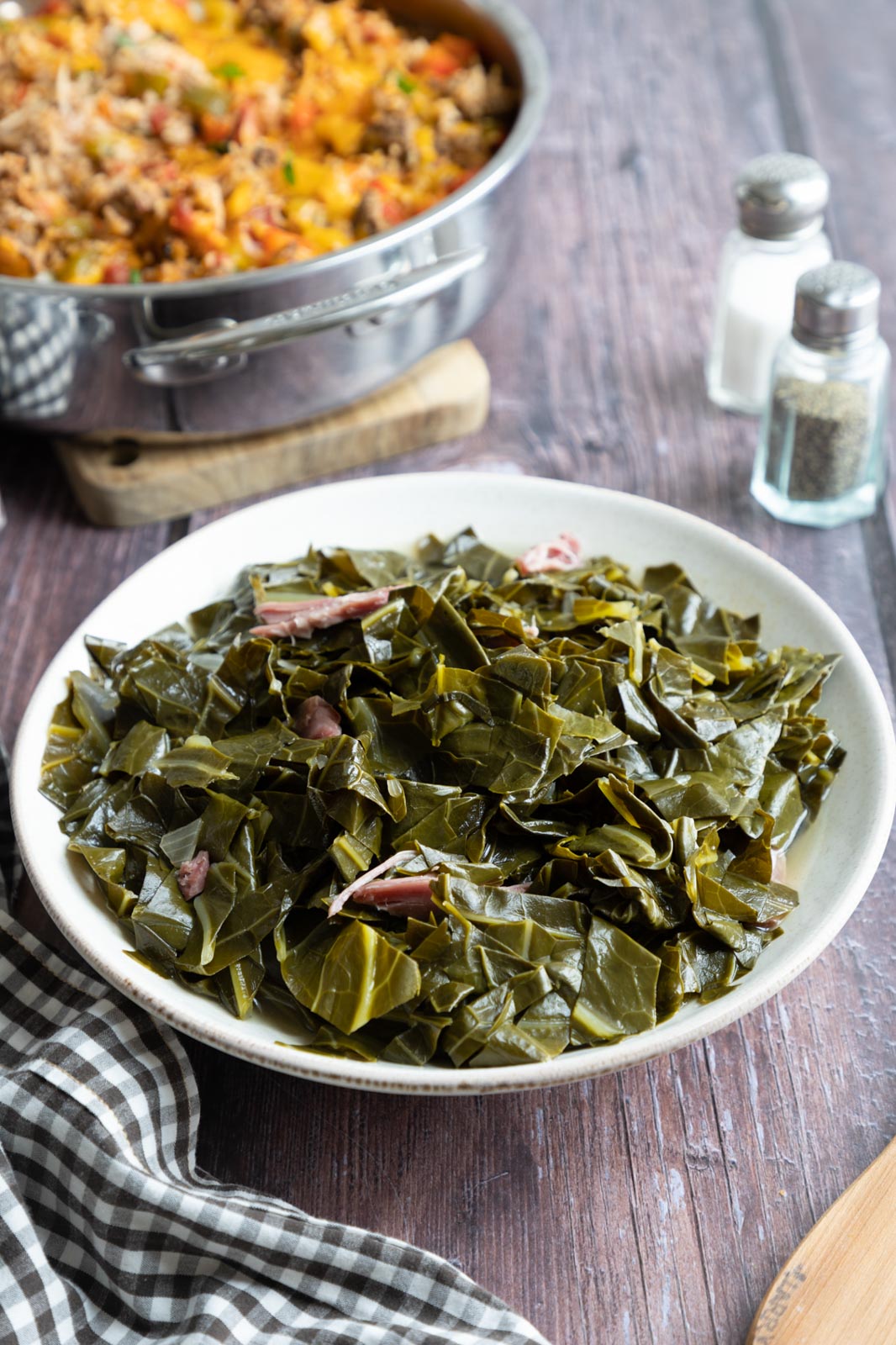
From Field to Table: A Story of Southern Collard Greens
The humble collard green, a staple of Southern cuisine, holds a history as rich and complex as its earthy flavor. More than just a side dish, it’s a symbol of resilience, community, and the enduring connection between people and the land. This journey, from the sun-drenched fields to the heart of a family meal, unveils the captivating story of this iconic Southern vegetable.
A Deep-Rooted History: Collards’ Southern Roots
Collard greens, a member of the *Brassica* family alongside kale and cabbage, arrived in the Americas with early European settlers. But their true Southern narrative began with enslaved Africans who cultivated the hearty greens, adapting them to the region’s climate and enriching their culinary traditions. These resilient plants thrived in the often-challenging conditions, providing a vital source of sustenance throughout history. The greens became a symbol of resourcefulness and survival, embedded deeply in the cultural fabric of the South.
Cultivation: A Labor of Love
Growing collards is a testament to patience and connection with nature. The process begins with sowing seeds in carefully prepared soil, a ritual passed down through generations. Farmers nurture the young seedlings, protecting them from pests and ensuring sufficient sunlight and water. The rhythmic cycle of planting, tending, and harvesting becomes a dance between human effort and nature’s bounty. The land itself whispers secrets to the farmer – the optimal time for planting, the best soil conditions, the signs of impending weather changes. It’s a relationship built on respect and understanding.
From Farm to Market: The Journey Continues
Once the collards mature, the harvest begins, often a communal effort involving family and friends. The crisp greens are carefully picked, bundled, and transported to local farmers’ markets, roadside stands, and grocery stores. This journey represents a vital link in the chain, connecting the grower with the consumer, ensuring that the freshness and quality of the greens remain intact.
The Culinary Canvas: Endless Possibilities
Collard greens, far from being a one-note player, offer a versatile culinary canvas. From simple preparations – simmered with smoked ham hock, bacon, or even just a splash of vinegar – to more complex recipes involving spices and other vegetables, collards can be adapted to an astonishing range of flavors. The heartiness of the greens provides a perfect base for rich, savory dishes, and their slightly bitter undertones add a sophisticated complexity.
| Preparation Style | Key Ingredients | Flavor Profile |
|---|---|---|
| Classic Southern | Ham hock, onion, garlic | Savory, smoky, slightly sweet |
| Spicy Collard Greens | Bacon, chili flakes, smoked paprika | Spicy, smoky, savory |
| Vegetarian Collard Greens | Vegetable broth, mushrooms, herbs | Earthy, savory, herbaceous |
Beyond the Plate: Cultural Significance
Collard greens represent far more than just sustenance; they embody Southern identity and community. Shared meals featuring collard greens are often at the center of family gatherings, celebrations, and comforting moments of togetherness. The dish transcends its culinary role, fostering a sense of belonging and shared heritage. The greens’ enduring presence on Southern tables testifies to its cultural significance and its power to connect people across generations.
A Sustainable Future: Preserving the Legacy
As awareness of sustainable agriculture and food systems grows, so too does the appreciation for the story behind our food. Supporting local farmers, embracing seasonal produce, and understanding the journey of our food from field to table are crucial steps in preserving the legacy of collard greens and other traditional crops. By cherishing these practices, we honor the generations who came before us and ensure that the rich culinary heritage of the South continues to flourish.
The story of Southern collard greens is a testament to the profound connection between people, land, and food. It is a story of resilience, cultural preservation, and the enduring power of simple, nourishing ingredients. So, next time you savor the robust flavor of collard greens, take a moment to appreciate the complete journey – from the sun-drenched fields to your table – a story as flavorful as the greens themselves.

Additional Information
From Field to Table: A Deeper Dive into the Southern Collard Greens Story
The narrative of collard greens from field to table offers a compelling lens through which to examine the intersection of agriculture, culture, and economics in the American South. While a surface-level understanding might focus solely on the culinary aspects, a deeper analysis reveals complexities within the production, distribution, and consumption of this staple crop.
1. Agricultural Practices and Sustainability:
The traditional cultivation of collard greens often involved methods that prioritized resilience over yield maximization. These methods, often passed down through generations, frequently relied on crop rotation, cover cropping, and minimal synthetic inputs. However, contemporary agricultural practices are increasingly influenced by market demands and larger-scale production. This shift presents both opportunities and challenges:
- Opportunity: Larger-scale farming can increase efficiency and access to markets, potentially benefiting producers. The use of precision agriculture techniques could optimize resource use and reduce waste.
- Challenge: The adoption of intensive monoculture practices can deplete soil nutrients, increase pest vulnerability, and compromise the long-term sustainability of collard green production. Furthermore, the shift away from traditional methods risks losing valuable biodiversity and indigenous knowledge. Studies on the long-term effects of intensive collard green farming on soil health and water quality in the Southern US are needed. A case study comparing traditional farming methods in rural communities with modern, large-scale operations could provide valuable data.
2. Economic Implications and the Farmer’s Perspective:
The economic viability of collard green farming is significantly influenced by factors such as market prices, transportation costs, and access to resources. Small-scale farmers often face challenges competing with larger commercial operations, particularly concerning pricing and distribution.
- Market Fluctuation: The price of collard greens can fluctuate significantly depending on seasonal availability and demand. This volatility makes it difficult for farmers to plan for long-term investments and ensures consistent income.
- Direct-to-Consumer Markets: Farmers markets and Community Supported Agriculture (CSA) programs offer alternative distribution channels that can provide farmers with higher returns and greater control over pricing. However, access to these markets often requires additional investment in transportation, packaging, and marketing.
- Labor Costs: Collard green cultivation is labor-intensive, particularly during planting, harvesting, and cleaning. The availability and cost of labor can significantly impact the profitability of collard green farming. Analyzing labor costs in relation to yield and market price would provide crucial economic insights.
3. Cultural Significance and Culinary Evolution:
Collard greens are deeply embedded in the cultural heritage of the American South, representing more than just a food; they are a symbol of resilience, community, and shared history. However, changing dietary habits and food preferences are impacting the consumption patterns.
- Generational Shifts: Younger generations may be less familiar with traditional collard green preparations, potentially affecting the demand for this crop. Marketing strategies that highlight the health benefits and versatility of collard greens could help bridge the generational gap.
- Culinary Innovation: Contemporary chefs are exploring innovative ways to incorporate collard greens into diverse culinary contexts, potentially expanding the market appeal. Analyzing the success of these innovative dishes and identifying key factors contributing to their popularity could inform future marketing efforts.
- Cultural Preservation: Efforts to document and preserve traditional collard green recipes and farming practices are crucial for ensuring the continuation of this important cultural heritage.
4. Future Directions and Sustainability Strategies:
Ensuring the long-term sustainability of collard green production requires a multi-faceted approach that integrates ecological, economic, and cultural considerations.
- Value-Added Products: Exploring the potential for value-added products, such as collard green chips, juices, or prepared meals, could increase market demand and enhance profitability for farmers.
- Sustainable Farming Practices: Promoting and supporting the adoption of sustainable farming practices, such as organic certification and water conservation techniques, is essential for environmental protection and long-term viability.
- Community Engagement: Engaging local communities in initiatives to support collard green farmers and promote the consumption of locally grown produce can foster food security and economic development.
In conclusion, the story of Southern collard greens extends far beyond the simple journey from field to table. A comprehensive understanding requires a nuanced analysis of the complex interplay between agricultural practices, economic factors, cultural significance, and sustainability challenges. By addressing these issues proactively, we can ensure the continued cultivation and appreciation of this vital crop for generations to come.






